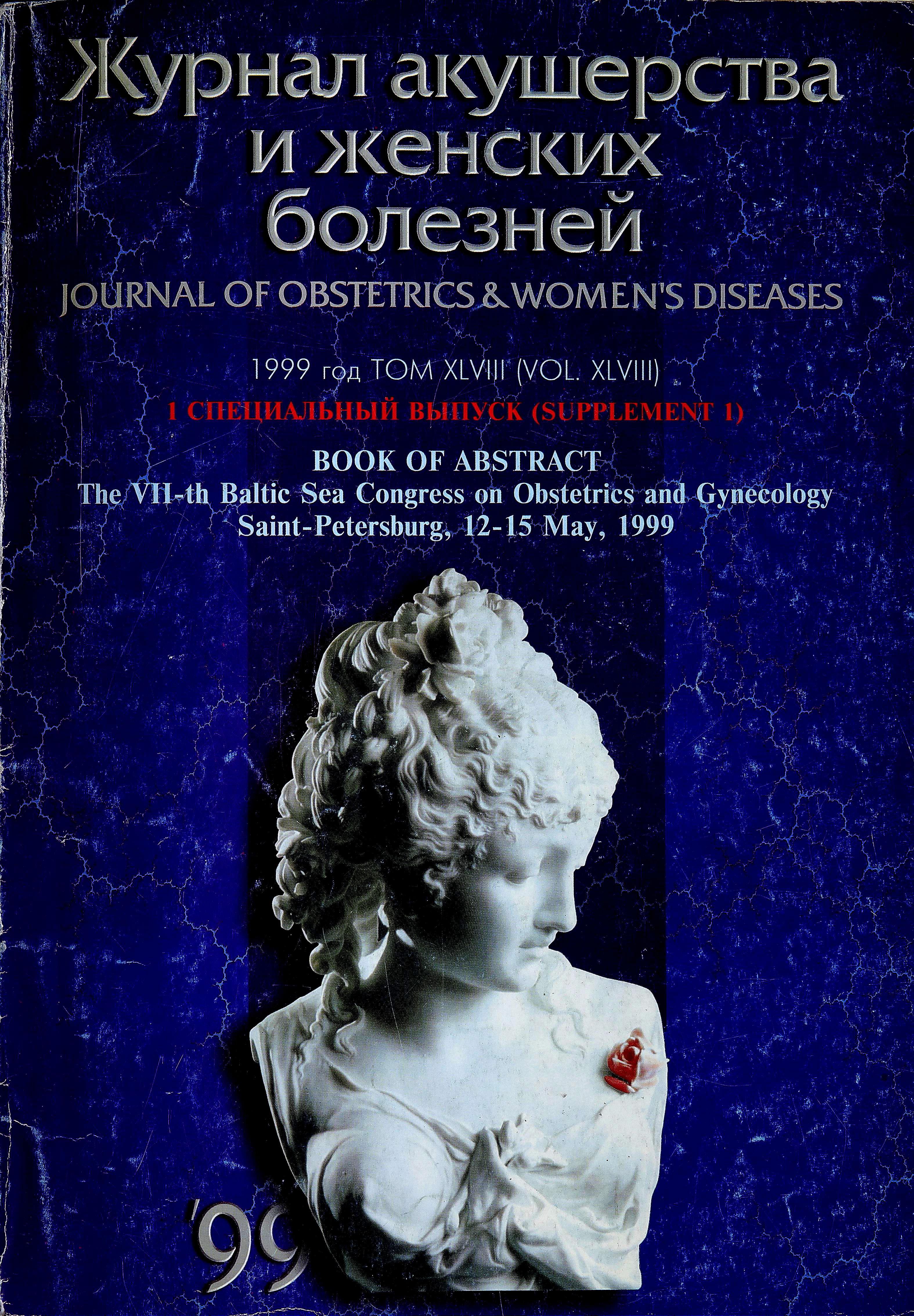Perinatal fetal care: still actual problem
- 作者: Savelyeva G.M.1, Sichinava L.G.1, Panina O.B.1, Kurtzer M.A.1
-
隶属关系:
- Russian State Medical University
- 期: 卷 48, 编号 5S (1999)
- 页面: 136-136
- 栏目: Articles
- ##submission.dateSubmitted##: 21.02.2022
- ##submission.dateAccepted##: 21.02.2022
- ##submission.datePublished##: 15.12.1999
- URL: https://journals.eco-vector.com/jowd/article/view/101384
- DOI: https://doi.org/10.17816/JOWD101384
- ID: 101384
如何引用文章
全文:
详细
Current demographic situation in Russia is characterized by low birth and high mortality rates. In this situation reduction of the perinatal mortality and morbidity that are still high have to be of great importance. There are more than 4500 deliveries per year in Moscow Center of Family Planning and Reproduction (obstetrical clinic of Russian State Medical University) with gradually decreasing perinatal mortality rate (1997 — 3,0%, 1998 — 1,87%). We believe that only well organized pre-, ante- and intranatal care, intensive care of the neonates can provide the decrease ofperinatal morbidity and mortality — the main goal of perinatologists.
全文:
Current demographic situation in Russia is characterized by low birth and high mortality rates. In this situation reduction of the perinatal mortality and morbidity that are still high have to be of great importance. There are more than 4500 deliveries per year in Moscow Center of Family Planning and Reproduction (obstetrical clinic of Russian State Medical University) with gradually decreasing perinatal mortality rate (1997 — 3,0%, 1998 — 1,87%). We believe that only well organized pre-, ante- and intranatal care, intensive care of the neonates can provide the decrease ofperinatal morbidity and mortality — the main goal of perinatologists.
The complex management of high-risk patients beginning from the 1st trimester should include genetic counselling, CVS, amnio- and cordocentesis, evaluation of intrauterine infections, dynamic ultrasonography, fetal monitoring including CTG anf biophysical profile, assessment of feto-placental circulation. Using of diagnostic and prognostic criterias of antenatal screening, optimal mode and term of delivery, intensive care of high-risk neonates proved to be useful in the prediction of pregnancy outcome and provide significant reduction of CNS disorders.
Thus, we believe that complex examination of high-risk patients allows to make a new approach to the prognosis of pregnancy outcome, early diagnosis and prophylaxis of perinatal disorders.
作者简介
G. Savelyeva
Russian State Medical University
编辑信件的主要联系方式.
Email: info@eco-vector.com
俄罗斯联邦, Moscow
L. Sichinava
Russian State Medical University
Email: info@eco-vector.com
俄罗斯联邦, Moscow
O. Panina
Russian State Medical University
Email: info@eco-vector.com
俄罗斯联邦, Moscow
M. Kurtzer
Russian State Medical University
Email: info@eco-vector.com
俄罗斯联邦, Moscow
参考
补充文件





